Determination and analysis of cordycepin and adenosine in the products of Cordyceps spp
Cordyceps sinensisis, a kind of precious natural crude drugs and edible mushrooms, were used as tonic food in East Asia area and enjoyed an extensive praise for its medicinal functions. Cordyceps militaris, as a substitute for C. sinensis, is a widely distributed species, which can be cultivated in various medium. In this study, the contents of major bioactive components, cordycepin and adenosine in fruiting bodies and mycelia from the nature C. sinensis and artificial cultural C. militaris were investigated using improved HPLC method. The results showed the mean contents of cordycepin and adenosine in the fruiting bodies of C. militaris were 2.654 ± 0.02 and 2.45 ± 0.03 mg/g, those in C. sinensis were 0.9801 ± 0.01 and 1.643 ± 0.03 mg/g, while those in the mycelium of C. militaris were 0.9040 ± 0.02 and 1.592 ± 0.03 mg/g, respectively. The concentration of cordycepin and adenosine in the fruiting bodies of C. militaris were higher than that in natural C. sinensis, while the fermented mycelium of C. militaris were similar with natural C. sinensis.
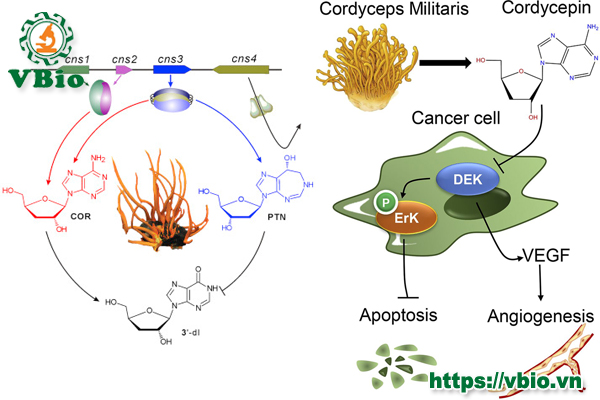
INTRODUCTION
Cordyceps includes several Cordyceps species, which are widely used for medicinal purpose or food additives. Among them, Cordyceps sinensis, DongChong-XiaCao in Chinese, is a complex of larva corpus of Hepialus armoricanus. For several centuries in China, C. sinensis was widely used as a kind of tonic food and herbal medicine for preventing or curing various diseases. For example, C. sinensis plays an important role in the treatment of respiratory and cerebrovascular diseases, enhancement of body immunomodulatory function and regulation of liver and renal metabolism (Koh et al., 2002; Zhu et al., 1998a, 1998b). Moreover, it also has been used as an antioxidant (Li et al., 2001; Yamaguchi et al., 2000) and antitumor agent (Dai et al., 2000; Zhang et al., 2004; Rao et al., 2007; Russell et al., 2008). C. sinensis is only found in the prairie soil at an elevation of 3600 -5000 m. It is mostly distributed in Tibet, Qinghai, Sichuan,
Yunnan and Gansu province in China (Zhou et al., 2009). Due to the limited distribution, high price, over-exploitation and difficulty in artificial culture to obtain mycelium, the resource of C. sinensis has been endangered. According to the recent investigation of Chinese Academy of Science, the product of C. sinensis had reduced 95% compared to that of 25 years ago, which made it necessary to conduct the substitute research. Cordyceps militaris is a widely distributed species, which can be cultivated in various medium. With more extensive distribution and feasibility in artificial culture, C. militaris becomes one of the most valuable substitutes of C. sinensis. C. militaris was approved as New Resource Food by Ministry of Health, People’s Republic of China in 2008. Some reports showed that C. militaris had similar medical effect with C. sinensis in antioxidant (Li et al., 2001) and antitumor (Kima et al., 2008; Lin et al., 2008). Therefore, many products in the market, including various developmental stages of C. militaris are all called as Chongcao in China; this gave the public same information with C. sinensis.
HPLC is one of the main means in quality monitoring of food and medicine products. It has been widely used in
variety determination. For the moment, it is acknowledged that the major bioactive components in cordyceps are adenosine and cordycepin (Guo et al., 1998; Hsu et al., 2002; Fan et al., 2006). Hitherto, there are various HPLC methods that had been widely used in the determination of adenosine and cordycepin from C. sinensis or C. militaris (Guo et al., 2006; Li et al., 2006; Huang et al., 2003). In these research reports, the main purpose was to detect the contents of bioactive compounds and establish a standard of quality control for C. sinensis and C. militaris. However, they have not mentioned that what main components of medium used in the culture of C. militaris. The medium have great effect on the accumulation of bioactive components (Gu et al., 2007; Shih et al., 2007). The fruiting bodies of C. militaris were cultured in rice medium, silkworm chrysalis medium, and wheat medium, respectively. The purposes of this study were to identify a most valuable substitute from several kinds of fruiting bodies products and fermented mycelia of C. militaris and provide scientific foundation for culture of high quality C. militaris and quality control of C. militaris products on the basis of cordycepin and adenosine quantitative analysis. This study further established foundation for pharmacology experiments of C. militaris substituting C. sinensis.
50 meshes) together in liquid nitrogen. Then, approximate 1.0 g of C. sinensis was precisely weighed and added into 10 ml methanol-water (50/50, V/V) in a 50 ml centrifuge tube which was subsequently placed in a ultrasonic machine for extracting cordycepin and adenosine at a power of 75 watt. After the centrifugation, the sample extraction procedure was repeated another twice. Supernatant obtained from the three times centrifugation was mixed and exactly measured of its volume. The sample was filtrated through a 0.45 pm filter prior to HPLC analysis. The extraction of cordycepin and adenosine from fruiting bodies and mycelium of C. militaris was also carried out in a similar procedure.
Determination of the bioactive components
All HPLC analysis work was carried out on a Waters 2695 Separation Module (Waters, Milford, MA, USA ), which consists of a Waters 2996 Photo-diode Array Detector, an auto injector, and a reverse phase column (Waters Symmetry Shield RP 18/4.6 x 150 mm, 5 pm). Standards of cordycepin and adenosine were purchased from Sigma Chemical Corporation (St. Louis, MO, USA). The standard adenosine and cordycepin solvent was consecutively injected five times to draw calibration curves. The injection volume was 2, 4, 8, 16 and 22 pl, respectively. The determination condition of the samples was set as follows: the mobile phase adopted in the analysis consists of water and methanol were in the ratio 85:15(V/V), 90:10(V/V) and 92:8 (V/V), respectively. The separation was conducted in isocratic elution with a flow rate of 1.0 ml/min. The detection wavelength of photo-diode array was set at 210 – 400 nm and the column temperature was 30°C. The injection volume was 10 pl.
MATERIALS AND METHODS Biological materials
The dried fruiting bodies of C. sinensis were purchased from a local health food store. The dried fruiting bodies of C. militaris, cultured in rice medium, silkworm chrysalis medium and wheat medium, respectively and the strain of C. militaris mycelium were provided by Heilongjiang Xinyisheng Pharmacy Co., Ltd. (China).
Preparation of Cordyceps militaris mycelia
Selected medium was used to cultivate C. militaris for mycelia, which contained ingredient as follows: 35 g/l sucrose, 5 g/l peptone, 2.5 g/l yeast extract, 0.5 g/l MgSO4, 1 g/l KH2PO4 and 0.05 g/l vitamin B1 (pH 5.2). At first, two agar blocks obtained from a stock culture tube were inoculated into a 250 ml Erlenmeyer flask with 50 ml selected medium and then placed on a shaker at 180 rpm at 28°C for 4 days. Then 25 ml of above culture was transferred to four 1L Erlenmeyer flasks with 250 ml medium, respectively. The fermentation was performed in these flasks on a 220 rpm rotary shaker at 28°C for a week. After the fermentation, the mycelium and supernatant was separated from the broth with centrifugation at 6000 rpm for 20 min. Then the fresh mycelium was dried using vacuum freeze drying machine (ALPHA 1-2LD, CHRIST, Germany) for 15 h. The dried mycelium and supernatant were stored in a refrigerator at -20°C.
Data analysis
Data collection and analysis was performed using Empower PDA software (Waters Corporation). The results were shown as the means of three replicates.
RESULTS AND DISCUSSION
Optimization of chromatographic conditions
In this study, the effect of chromatographic condition on the separation was investigated; especially flow rate and mobile phase. The separation was compared when using different solvent as mobile phase, such as methanol, acetonitrile, ethanol and buffer salt solution. The results shown the best separation was obtained under a specific concentrations of methanol and water. Based on the flow rate of mobile phase, the elution time was determined. It was found that 1.0 ml/min was a proper flow rate. As cordycepin and adenosine are polarity organic matters, with the increase of percentage of methanol in mobile phase, the difference of retention time of cordycepin and adenosine become small which resulted in a poor separation. When using water-mathanol (85:15, V/V) and water-mathanol (90:10, V/V) as mobile phase, the retention time was less than two minutes. Considering both the elution time and retention times, flow rate of 1.0 ml/min and mobile phase of water-methanol (92:8, V/V) was the optimized chromatographic condition used for all following analysis (Figure 1).
been used including phosphate buffer-methanol, water-acetonitrile, methanol- formic acid and gradient elution. However, the separation was not very good and they have close retention times because of their similar structure. On the basis of our experiment, cordycepin and adenosine could be separated when using methanol and water as mobile phase. In this study, we established an optimized chromatographic condition with a mobile phase water-methanol (92:8, V/V), flow rate 1.0 ml/min and detection wavelength 254 nm, which had good separation on adenosine and cordycepin in cordyceps products within 15 min.
Analysis of cordycepin and adenosine from different samples
Under an optimum chromatographic conditions, to the standards of adenosine, the retention time (Tr) was 8.960, limit of detection (based on a signal to noise ratio of 3:1) 0.30 and processed channel (UVÀ) 254.0, Linear range 2.50 – 120 pg/ml. To the standards of cordycepin, the Tr 11.23, limit of detection (based on a signal to noise ratio of 3:1) 0.25 and processed channel (UVÀ) were 254.0, Linear range 2.85 – 130 pg/ml. Based on the chromatographic conditions, we established the standard curves cordycepin and adenosine standards. The regression equations of calibration curves and their coefficients were calculated as follows: for cordycepin, Y = 3.41136E
– 7X + 0.5240 (R = 0.9991); for adenosine, Y= 3.33179E -7X +0.5243 (R = 0.9992). The separation was conducted in isocratic elution with a flow rate of 1.0 ml/min. The detection wavelength of photo-diode array was set at 210
– 400 nm, and the column temperature was 30°C. The injection volume was 10 pl.
The HPLC analysis results showed the contents of cordycepin and adenosine in the fruiting bodies of C. militaris culture on the rice medium, silkworm chrysalis medium and wheat medium were 3.412 ± 0.01 and 2.702 ± 0.02, 1.848 ± 0.01 and 2.090 ± 0.03, 2.720 ± 0.03 and 2.539 ± 0.02 mg/g, respectively. The mean contents of cordycepin and adenosine in artificial cultural C. militaris fruiting bodies were 2.654 ± 0.02 and 2.45 ± 0.03 mg/g, respectively; those in C. sinensis were 0.9801 ± 0.01 and 1.643 ± 0.03 mg/g, while those in the mycelium of C. militaris were 0.9040 ± 0.02 and 1.592 ± 0.03 mg/g, respectively. Among the different products of cultured C. militaris, the fruiting body cultivated in rice medium had the highest contents of cordycepin and adenosine. The cordycepin contents in each fruiting body product of C. militaris were higher than those in dried C. sinensis. And the adenosine’s contents in three kinds of fruiting bodies were higher than that in dried C. sinensis as well, while both of the cordycepin and adenosine’s contents in mycelium of C. militaris were similar to those of C. sinensis.
There are many other papers which report the similar research work, determination of adenosine and cordyce-
pin as well (Li et al., 2006; Guo et al., 2006; Peng et al., 2008). However, they haven’t mentioned that what kind of medium used in the culture or the main components of the medium. The medium have great effect on the accumulation of bioactive components (Gu et al., 2007; Shih et al., 2007), which was confirmed in this study as well. As for the fruiting bodies of C. militaris, concentrations of adenosine and cordycepin of rice medium were obvious higher than the other two medium.
In previous research report, the main purpose was to detect the contents of bioactive compounds and establish a standard of quality control for C. sinensis (Li et al., 2006; Guo et al., 2006). And a lot of work had been done to illustrate the function and structure of major bioactive ingredients in Cordyceps (Li et al., 2001,2006; Gu et al., 2007). However, this study put emphasis on establishing a most valuable substitute of C. sinensis and an optimum medium. We must be aware of that as one of the well known Chinese Traditional Medicine; C. sinensis is faced with an extinction crisis. According to contemporary exploitation speed, C. sinensis will be used up in a near future. In this study, the analysis had been conducted to detect the concentration of cordycepin and adenosine in several C. militaris products cultured in different medium with the purpose of finding an ideal substitute of C. sinensis and solving its extinction crisis. From the date shown that the fruiting body of C. militaris (rice medium) was highest in the concentrations of cordycepin and adenosine compared to other two fruiting bodies kinds of C. militaris (cultured in silkworm chrysalis medium and wheat medium, respectively). So the C. militaris fruiting body (rice medium) could be chosen to be the proper substitute of C. sinensis based on the comparison of different medium in the concentrations of bioactive components. And the rice medium is the best medium in accumulating adenosine and cordycepin. Mass production of this kind fruiting body will bring large amount of substitute of C. sinensis. This study found an ideal substitute and provided a feasible scheme for the solving of C. sinensis extinction crisis.
ACKNOWLEDGEMENTS
This research is financially supported by the Shanghai Science and Technology Committee, Shanghai Leading Academic Discipline Project (Project Number: B209) and Heilongjiang Xinyisheng Pharmaceutical Co., Ltd., P. R. China.
REFERENCES
Dai XJ, Liu DM, Meng X (2000). Anticancer effect research status of Cordyceps sinensis. Lishizhen Med. Mater. Med. Res. 11: 376-378.
Fan H, Li SP, Xiang JJ, Lai CM, Yang FQ, Gao JL, Wang YT (2006). Qualitative and quantitative determination of nucleosides, bases and their analogues in natural and cultured Cordyceps by pressurized liquid extraction and high performance liquid chromatography- electrospray ionization tandem mass spectrometry (HPLC-ESI-MS/MS).
Anal. Chim. Acta 567: 218-228.
Gu YX, Wang ZS, Li SX, Yuan QS (2007). Effect of multiple factors on accumulation of nucleosides and bases in Cordyceps militaris. Food Chem. 102: 1304-1309.
Guo C, Zhu J, Zhang C, Zhang LJ (1998). Determination of adenosine and 3′-deoxyadenosine in Cordyceps militaris (L.) Link. by HPLC. J. Chinese Med. 23: 236-237.
Guo FQ, Li A, Huang LF, Liang YZ, Chen BM (2006). Identification and determination of nucleosides in Cordyceps sinensis and its substitutes by high performance liquid chromatography with mass spectrometric detection. J. Pharmaceut. Biomed. 40: 623-630.
Hsu TH, Shiao LH, Hsieh C, Chang DM (2002). DongChongXiaCao, its counterfeit and mimic, and fermented mycelium of Cordyceps sinensis. Food Chem. 78: 463-469.
Huang LF, Liang YZ, Guo FQ, Zhou ZF, Cheng BM (2003). Simultaneous separation and determination of active components in Cordyceps sinensis and Cordyceps militaris by LC/ESI-MS. J. Pharmaceut. Biomed. 33: 1155-1162.
Kima CS, Leed SY, Choa SH, Kob YM (2008). Cordyceps militaris induces the IL-18 expression via its promoter activation for IFN-y production. J. Ethnopharmacol. 120: 366-371.
Koh JH, Yu KW, Suh Hj, Choi YM, Ahn TS (2002). Activation of macrophages and the intestinal immune system by an orally administered decoction from cultured mycelia of Cordyceps sinensis. Biosci. Biotechnol Biochem. 66: 407- 411.
Li SP, Li P, Dong TT, Tsim KW (2001). Anti-oxidation activity of different types of natural Cordyceps sinensis and cultured Cordyceps mycelia. Phytomedicine 8: 207-212.
Li SP, Yang FQ, Tsim KW (2006). Quality control of Cordyceps sinensis, a valued traditional Chinese medicine. J. Pharmaceut. Biomed. 41: 1571- 1584.
Lin YW, Chiang BH (2008). Anti-tumor activity of the fermentation broth of Cordyceps militaris cultured in the medium of Radix astragali. Process Biochem. 43: 244-250.
Peng L, Song X, Shi X, Li J, Ye C (2008). An improved HPLC method for simultaneous determination of phenolic compounds, purine alkaloids and theanine in Camellia species. J. Food Compos. Anals. 21:559-563.
Rao YK, Fang SH, Tzeng YM (2007). Evaluation of the antiinflammatory and anti-proliferation tumoral cells activities of Antrodia camphorata, Cordyceps sinensis, and Cinnamomum osmophloeum bark extracts. J. Ethnopharmacol. 114: 78-85.
Russell R, Paterson M (2008). Cordyceps-A traditional Chinese medicine and another fungal therapeutic biofactory? Phytochemistry 69: 1469-1495.
Shih IL, Tsai KL, Hsieh C (2007). Effects of culture conditions on the mycelial growth and bioactive metabolite production in submerged culture of Cordyceps militaris. Biochem. Eng. J. 33: 193-201.
Yamaguchi Y, Kagota S, Nakamura K, Shinozuka K, Kunitomo M (2000). Antioxidant activity of the extracts from fruiting bodies of cultured Cordyceps sinensis. Phytother. Res. 14: 647-649.
Zhang Q, Wu J, Hu Z, Zhang D (2004). Induction of HL-60 apoptosis by ethyl acetate extract of Cordyceps sinensis fungal mycelium. Life Sci. 75: 2911- 2919.
Zhou XW, Gong ZH, Su Y Lin J, Tang KX (2009). Cordyceps fungi: natural products, pharmacological functions and developmental products. J. Pharm. Pharmacol. 61: 1-13.
Zhu JS, Halpern GM, Jones K (1998a). The scientific rediscovery of an ancient Chinese herbal medicine: Cordyceps sinensis: part I. J. Altern. Complem. Med. 4:289-303.
Zhu JS, Halpern GM, Jones K (1998b). The scientific rediscovery of a precious ancient Chinese herbal regimen: Cordyceps sinensis part II. J. Altern. Complem. Med. 4: 429-457.
Viện Nghiên cứu Sinh học Ứng dụng
Địa chỉ: Số 39, Ngõ 189/61, Hoàng Hoa Thám, Ngọc Hà, Quận Ba Đình, TP Hà Nội
ĐT: (+84) 2422 118 008 – (+84)962 567 869
Website: https://vbio.vn/
Email: vbiovn1@gmail.com
TIN LIÊN QUAN
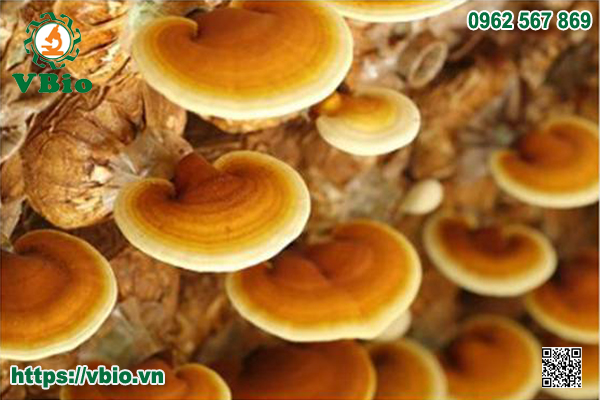
EDIBLE AND MEDICINAL MUSHROOMS
Ganoderma Karst, belongs to the groups Eumycota, Basidiomycotina, Hymenomycetes, Aphyllophorales, Ganodermatacese, and is a genus of wood decaying polypore fungi of economic importance. Up to now, more...
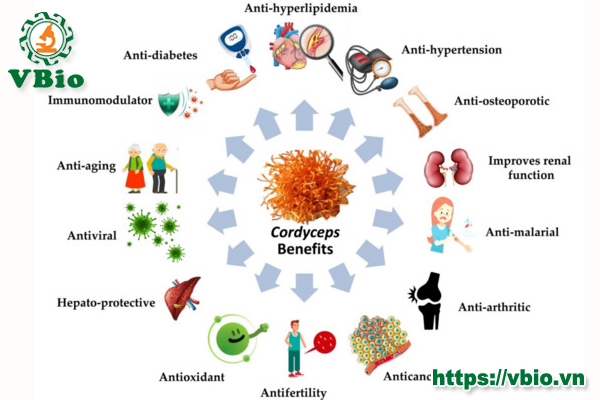
Cordycepin for Health and Wellbeing
Cordycepin for Health and Wellbeing: A Potent Bioactive Metabolite of an Entomopathogenic Medicinal Fungus Cordyceps with Its Nutraceutical and Therapeutic Potential Abstract: Cordyceps is a rare naturally...
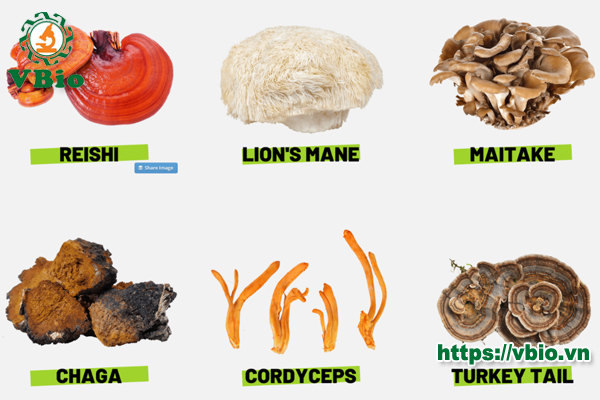
The medicinal fungus Cordyceps militaris: Research and development
The medicinal fungus Cordyceps militaris: Research and development Abstract Ophiocordyceps sinensis (syn. Cordyceps sinensis) is a highly valued medicinal fungus. This entomopath-ogen has a limited distribution, has...
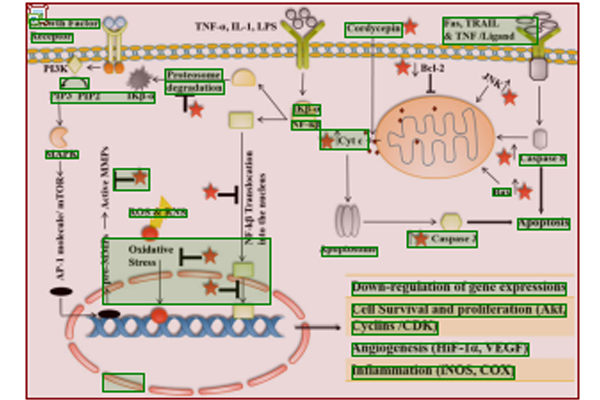
Cordycepin: A Cordyceps Metabolite with Promising Therapeutic Potential
For thousands of years, natural products from medicinal mushroom are being used for the cure of different lethal diseases. Among the huge category of medicinal herbs, the...


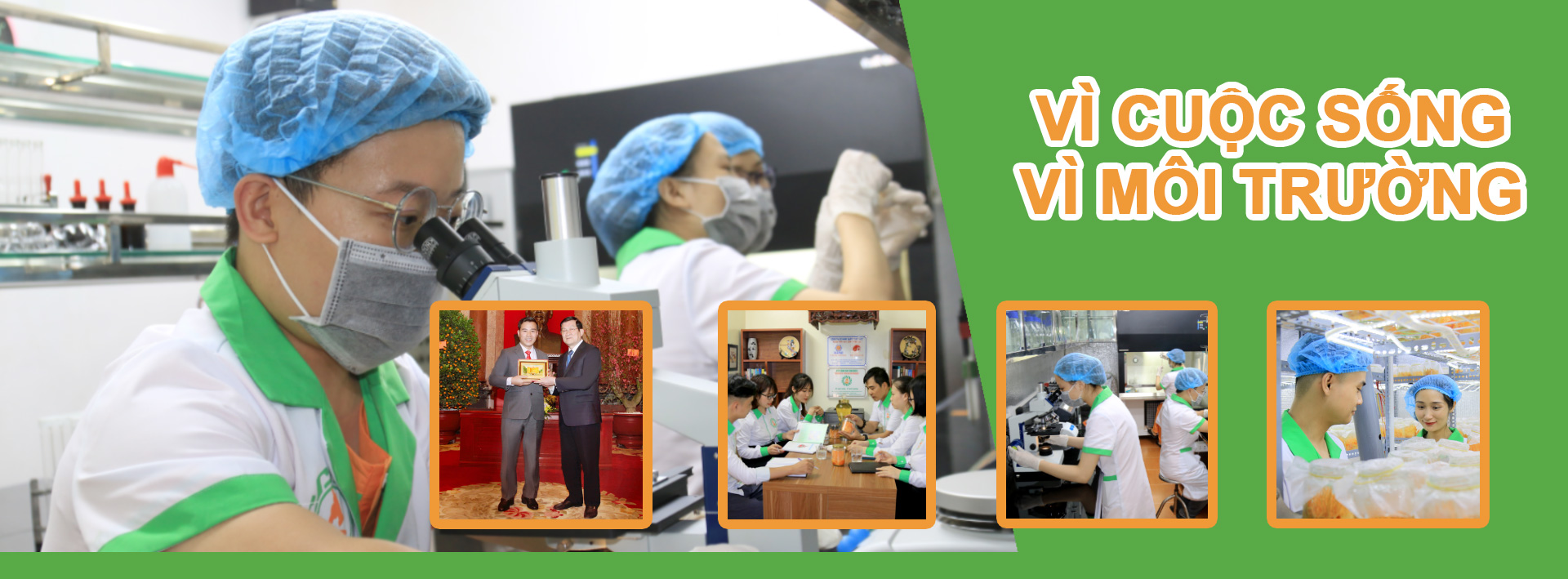
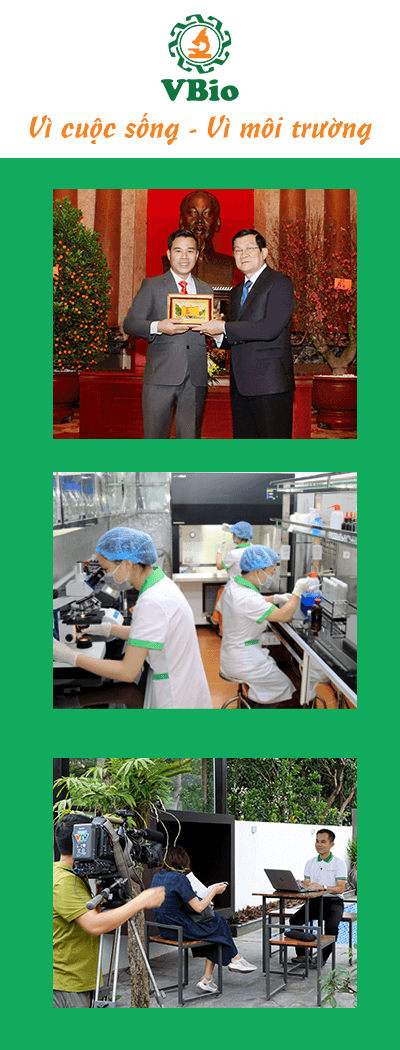








 0
0

